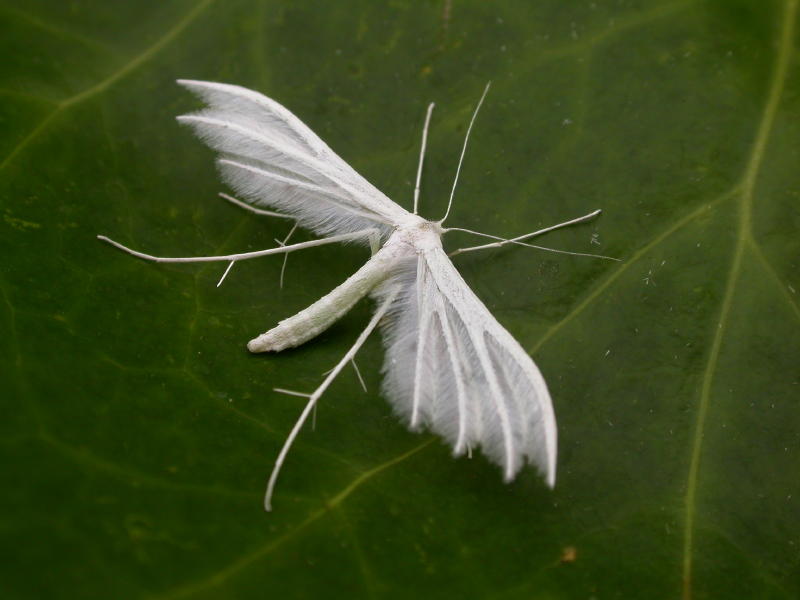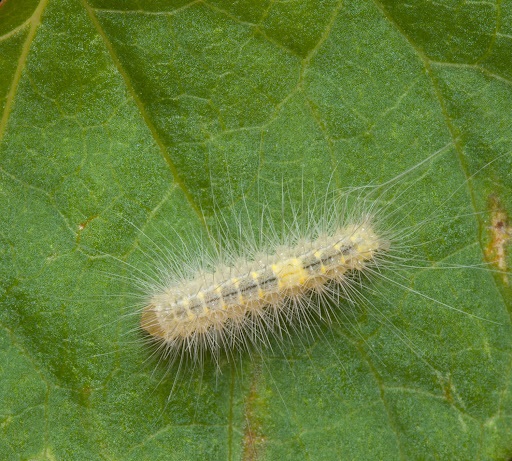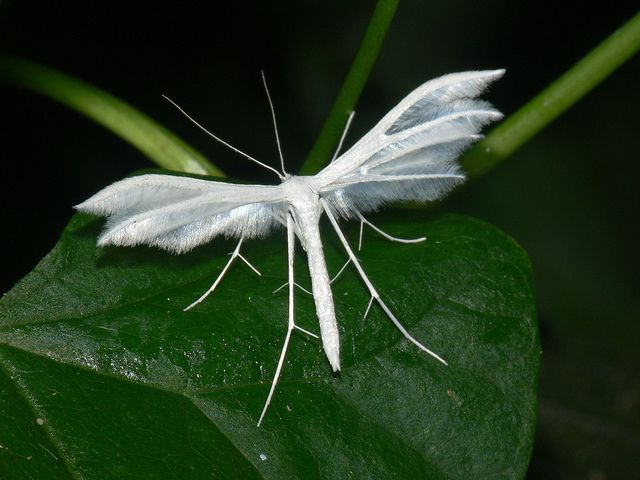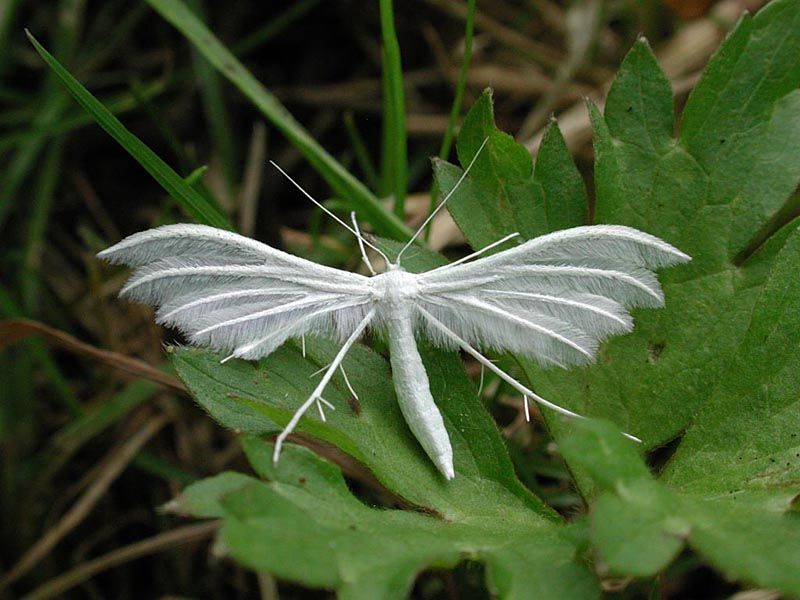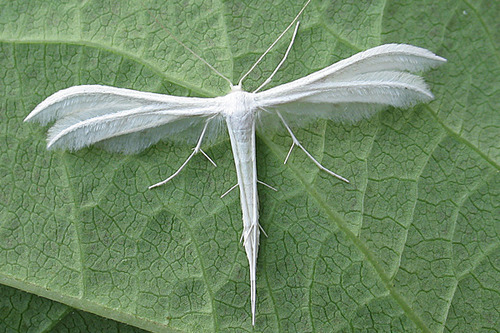White Plume Moth (Pterophorus pentadactyla)
The white plume moth can be easily recognized from its unique-looking white wings, similar to feathery plumes, giving it its name. Carl Linnaeus first described it in 1758 as Aciptilia pentadactyla, translating to five fingers in Greek.
static.wikia.nocookie.net
Scientific Classification
- Family: Pterophoridae
- Genus: Pterophorus
- Scientific Name: Pterophorus pentadactyla
Description and Identification
Caterpillar
The larva has a greenish body in the beginning, developing long, white hairs in the second instar stage. Eventually, the hair length shortens, and black hairs combine the white ones. Matured larvae are of a yellowish-green coloration.
Pupa
The rectangular-shaped around 6.5 mm pupa has a pointed abdominal tip. Their dorsal and ventral regions appear dark and light green, respectively; the pupal phase lasts five days.
Adult Moth
Sexual Dimorphism: Present but not prominent.
Color and Appearance: When opened and closed, the wings of this species appear entirely white. The forewings have two white feathery plumes, while the hindwings have three of them, not prominently visible when the wings are folded.
Average wingspan: 26-34 mm
Flight pattern: Consistent
Season: June to August
Egg
The eggs are white when first laid, turning green upon hatching. A female can lay from 25- 130 eggs, attaching them to a leaf surface by secreting a cemented substance.
Quick Facts
| Distribution | Parts of Europe mainly in Great Britain, throughout the Middle East spreading as far as Iran |
| Habitat | Dry grassland, waste ground, and gardens |
| Predators | Bats and birds |
| Lifespan of Adults | 3 months |
| Host Plants | Plants of the bindweed family |
| Adult Diet | Nectar |
Scientific Classification
- Family: Pterophoridae
- Genus: Pterophorus
- Scientific Name: Pterophorus pentadactyla

